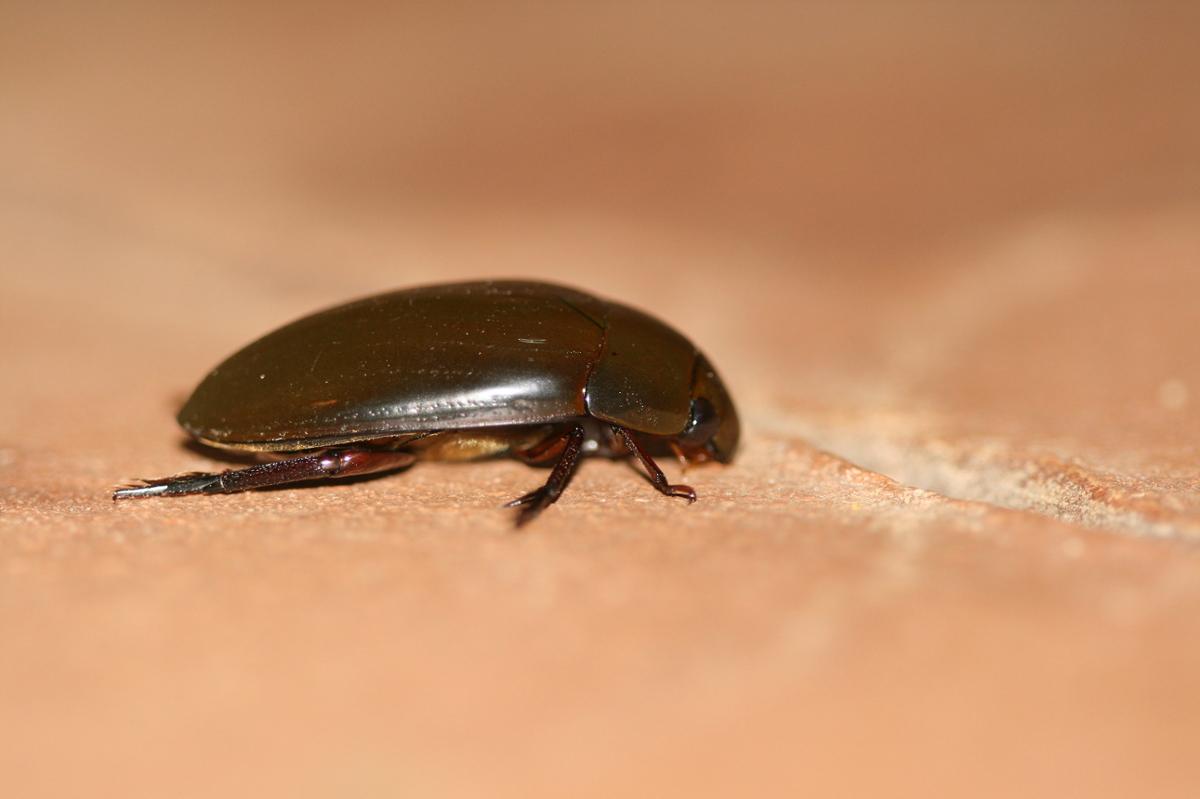Animals that live in water have many ways of moving around. Some swim. Squids and octopuses squirt water from their mantles in a kind of jet propulsion. Many other kinds of animals walk or crawl along underwater surfaces.
Some insects have a unique relationship with water due to its property of surface tension. Water molecules have electrical charges that cause them to stick together. They stick more tightly at the water’s surface making it resistant to external force. The same forces cause water to congeal into drops. These forces are pronounced in relation to the tiny bodies of insects. Water striders are insects with long legs covered with tiny hairs that repel water. They can actually move on top of the water’s surface tension, without ever getting wet. Apparently, surface tension also gives some insects a special relationship with the underside of the water’s surface.
In 2021 an international duo of zoologists reported their discovery of a species of Australian water scavenger beetle that can walk upside down on the underside of the water’s surface, just like some insects might crawl along the underside of a pane of glass. The beetle never breaks the water’s surface or contacts air.
The researchers think that the buoyancy of bubbles of air trapped in the insect’s abdomen provides an upward force, allowing the beetle to cling to the underside of the water’s surface tension. They want to study the anatomy and chemistry of the beetle’s feet, to learn how they interact with the underside of the water. The water strider’s feet repel the water’s surface tension, but we don’t know how the beetle’s feet get their traction on the underside of the water.










